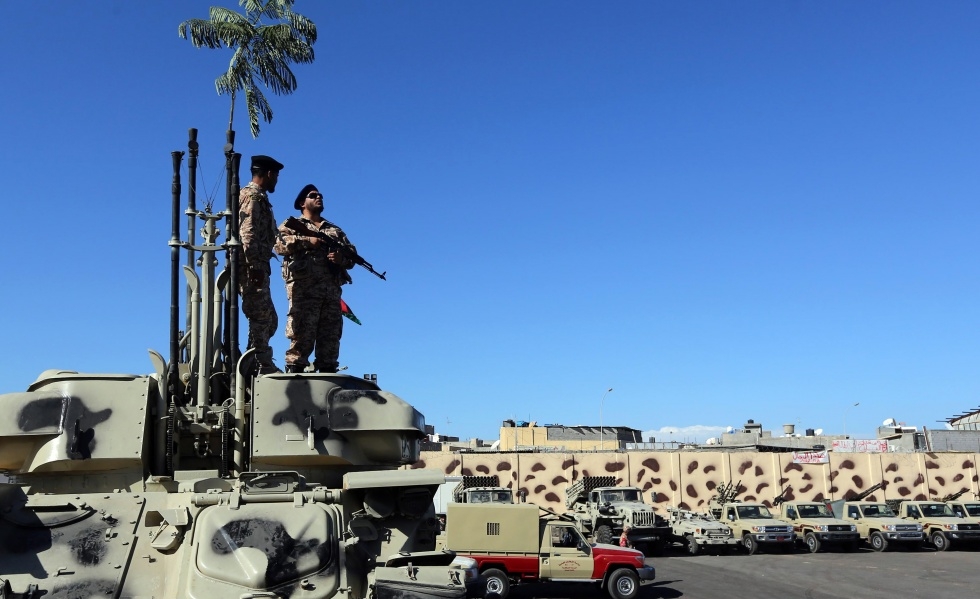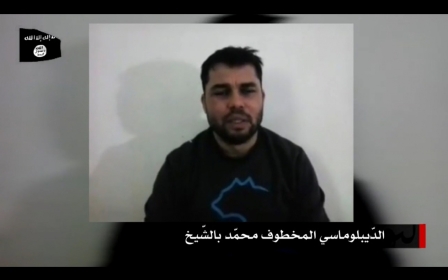A guide to the main groups in Libya

Libya has always been made up of a complicated patchwork of tribes and regional loyalties. Since the 2011 revolution and the subsequent fall of former strongman Moamer Gaddafi in 2011, however, that intricate patchwork has become even more complicated.
Countless groups and militias have sprung up with various degrees of allegiance to the central government and different agendas. The last few days have seen an explosion in activity with many of these armed groups taking centre stage.
This is a guide to help you navigate Libya’s political maze.
Major institutions:
General National Congress: The GNC or parliament, Libya's highest political authority, comprises 200 members who were elected in July 2012. It is dominated by Islamists and criticised for giving Islamist militias legitimacy by giving them security tasks as a way of trying to restore security in post-revolutionary Libya.
New MEE newsletter: Jerusalem Dispatch
Sign up to get the latest insights and analysis on Israel-Palestine, alongside Turkey Unpacked and other MEE newsletters
The government: A victim of GNC political wrangling, the government regularly complains about its lack of powers, particularly in security matters. Former premier Ali Zeidan who tried to stand up to the GNC was ousted in March and was replaced by Abdullah al-Thani, who resigned a few weeks later. In early May, the GNC elected a new premier, Ahmed Miitig, who was due to present his cabinet for approval this week. Libya's embattled government has now proposed that parliament go into recess in a bid to stave off a possible descent into renewed civil war.
The national army: Still being trained, but heavily outgunned by former rebel groups that raided the arsenals of the Gaddafi regime. Some groups have joined the army's ranks but retain their own commanders and look after their own interests.
Armed groups in Benghazi
The "National Army:" is not to be confused with the actual national army, is a paramilitary force created and run by the retired former general Khalifa Haftar that on Friday attacked Islamist militias to eradicate "terrorism". Several officers from the national arm that have bases in the east, including from the air force, have joined him. Authorities in Tripoli accuse it of trying to mount a coup.
February 17 Martyrs and Rafallah al-Sahati Brigades: Two powerful militias "officially" under defence ministry control and tasked with several missions, particularly in the south. However, they are generally considered to be largely independent of the Libyan central command and follow a much more Islamist-led agenda than the national army. The “National Army” just iffied its attack on Benghazi in
Ansar al-Sharia Brigades: Classified by Washington as a terrorist organisation, this group is suspected of involvement in targeting officers and soldiers, and in the September 2012 attack on the US consulate that killed US ambassador Chris Stevens and three other Americans. Ansar al-Sharia also has branches in the eastern town of Derna, Sirte in central Libya and Sabratha in the west. The group has said that some of its fighters have been killed in the recent Benghazi clashes.
Cyrenaica force: Formed by supporters of a federal government who want autonomy for eastern Libya. Includes guards from petroleum installations who have blockaded oil terminals.
Armed groups around Tripoli
Zintan's Al-Qaaqaa and Al-Sawaiq brigades: Formed in the western town of Zintan, these are well established in the capital, controlling the airport and several military sites, and are seen as among the best armed and disciplined. Hostile to Islamist groups, they are considered by their rivals as the armed wing of the secular movement. Officially under defence ministry control, they claimed an 18 May attack on the GNC, demanding its dissolution.
Operations Cell of Libyan Revolutionaries and Libya Shield Force: Comprised of several Islamist militias considered to be the armed wing of Islamist groups within the GNC.
Misrata militias: Like their rivals from Zintan, groups from the coastal town of Misrata are seen as being among the best armed and most powerful. Some have joined other groups, like Libya Shield Force or the Operations Cell of Libyan Revolutionaries, but often in the best interests of their home town. Unlike Zintan groups, they defend the GNC's legitimacy.
Middle East Eye delivers independent and unrivalled coverage and analysis of the Middle East, North Africa and beyond. To learn more about republishing this content and the associated fees, please fill out this form. More about MEE can be found here.



